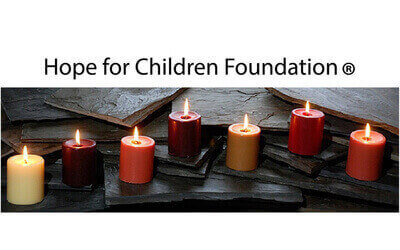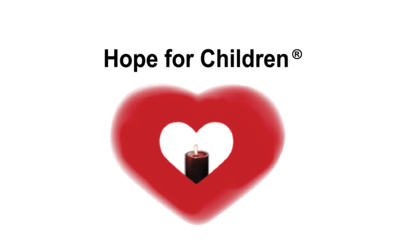Mindfulness
Posted by Dr. Yvette Evans, Ed. D.,M.S. CCC/SLP-L on Oct 29th 2022
TIPS OFFERED TO HELP CHILDREN USE MINDFULNESS
The purpose of this post is to provide easy and accessible tools to help children and teens of all abilities to ease their anxiety and worries using mindfulness practices. Our lives are full of events that are out of our control. This would include circumstances that involve our family members, friends, and others that are a part of lives. The media also brings events into our homes including but not limited school shootings along with suffering around the world including those victimized by wars such as the people of Ukraine.
VALIDATE FEELINGS IN A HEALTHY WAY - REASSURE CHILDREN’S SAFETY - REDUCE FEAR
Feelings are a natural part of our human experience. It is important for us to validate other’s feelings in healthy and truthful ways when a tragedy occurs. It can be hard for children to understand and recognize their feelings. First, take a moment with your child to identify their feelings as you reassure them that experiencing feelings is alright and we all have feelings. Give children time to talk about their feelings, help a child put their feelings into perspective, and assist them in expressing these feelings in a safe, accepting environment. A fun way for children to identify their feelings is watching an insert from the movie Inside Out by Disney. In this clip it the characters demonstrate an array of feelings. Here is the URL to copy and paste into your browser:
To help get the conversation started we found a child friendly short film. This cute but serious short film is to help children or adults understand about mental health including emotional wellness that is offered by Bridge the Gap: Mental Health Explained. Here is the URL to copy and paste into your browser:
WHAT IS MINDFULNESS?
There are many definitions of mindfulness. The most accepted and used definition includes the idea that it is a moment-by-moment-by-moment awareness of our thoughts, emotions, bodily sensations, and surrounding environment with openness and curiosity. Mindfulness training reduces stress, depression, and anxiety (Murray, 2014). Please review this video for a better understanding of Mindfulness:
Here is another outstanding resource is from the American Psychological Association: Exploring Feelings with Mindfulness by Lauren Rubenstein, PsyD, RCYT. This article provides insights into mindfulness and activities to help cope with feelings. Here is the link: https://www.maginationpressfamily.org/mindfulness...
There are many mindfulness practices. It is important to find the practice(s) that fits the situation and the person. When we think of the outside stressors of the world it can cause intense feelings of anxiety. When we think of anxiety, it has direct impact on our minds and bodies such as tensing our muscles, rapid breathing, and increase heart rate. When our body takes over, we go into “flight or fight” mode, which means are body is preparing us to face danger. This also can have impact on how we think by losing our ability to problem solve and concentrate. We need a way for our children to calm their anxious thoughts. This is where the following practices of mindfulness can help. Look over the areas and resources. Think about and write down what strategies would be helpful to you so that you can model the coping strategies for your child.
Meditation is often the core mindfulness practice. While it can take many forms, one of the most common mindfulness meditations is loving-kindness meditation, which focuses on increasing compassion for yourself and others. Here is a short video offered through the professional work of Cosmic Kids Zen Den, Mindfulness for Kids called “Be the Pond” that provides child friendly explanations and activities. Here is the link:
Mindful breathing - Mindfulness practices often include simple breathing exercises designed to help you focus on your breath and reduce your body’s stress response.
Here is one of my favorite videos for children of all ages on the use of breathing to calm thoughts. "Just Breathe" by Julie Bayer Salzman & Josh Salzman (Wavecrest Films). Here is the link:
For children of all ages GoNoodle is a wonderful site with choices for your child for breathing and movement. Here is the link: https://www.gonoodle.com/tags/ZwmOzX/breathe
Visualization - Your mindfulness practice might include specific visualization exercises, such as imagining your thoughts as clouds or your breath as colorful light.
These exercises include deep breathing and visualization. These types of activities can be great for mental health, including as a mental break that allows for the student to ‘re-group” and recenter themselves in the task at hand. In addition, there is research that supports visualization techniques can help reading comprehension and anxiety of upcoming events. Here is an example from Mind Coach: https://kidsrelaxation.com/7-visualization-tools-...
Body scan - An especially common mindfulness meditation is the body scan, in which you carefully imagine each part of your body to gain awareness of your physical existence and sensory experience. This is a site called Blissful Kids. It has many activities including instructions on Mindful Body Scan. Here is the link: Mindfulness for Children – Body Scan - Blissful Kids: Here is the link: https://blissfulkids.com/?s=body+scan
Mindful movement - Mindful movement might include walking meditations, physical practices like qigong or yoga, or movement through specific spaces such as a labyrinth. Blissful Kids also has several creative movement activities for mindfulness. Here is the link: https://blissfulkids.com/category/exercises/
Journaling - Writing is often a form of mindfulness practice in which you allow yourself to free-associate and observe your thoughts as they occur. This is a great site for journaling for kids that include writing prompts to help your child get stared by Journaling for Kids/ Mindfulness Meditation. Here is the link: https://journalforkids.com/feelings-journal-promp...
Sensory exercises - Sensory activities like eating, listening to music, and washing the dishes can all be performed mindfully. These exercises can be especially helpful in connecting you to your existence in the present moment.
Thank you for reviewing this information. It is alright to express to your child that you may not have all of the answers, but you do have ways to help them ease their worries and anxiety. We hope you find this information informative. This is intended to help improve the quality of life for you, your children, family and friends.
Sincerely,
Dr. Yvette Evans, Ed. D.,M.S. CCC/SLP-L
Pediatric Speech-Language Pathologist
Member of the Board of Directors for Hope for Children Foundation


